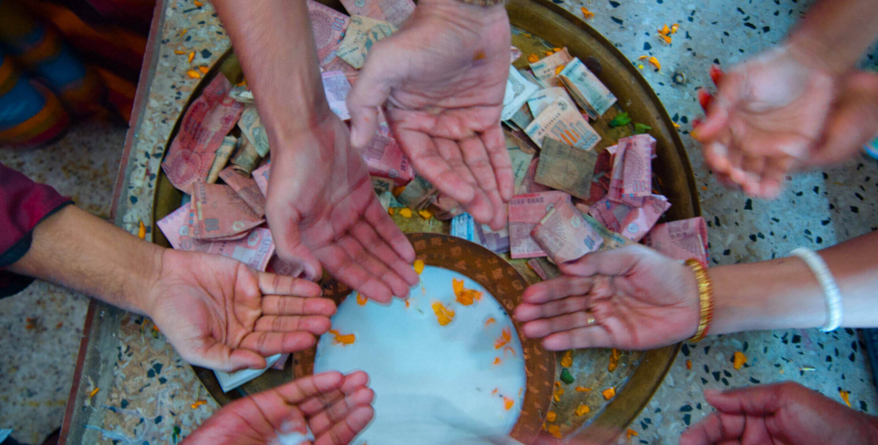Many are looking to Africa as a major powerhouse to come for producing massive returns in the banking industry. Indeed, according to The Economist (2013) the unfortunate reality is that while many banks are consequently expanding in Africa very rapidly, the results have not yet been forthcoming. Indeed, The Economist explains:
“… the costs of building networks of branches and of investing in growth mean that such returns remain in the distant future.”
There are many reasons why Africa is a target for investment for the banking industry. Just looking at the figures for numbers of account holders provides this. While The Economist reports that World Bank figures show Mauritius having 80% of its population over the age of 15 with an account “at a formal financial institution” as of 2011, the fact is that in many countries less than 20% of this population has an account. Countries where less than 20% of those aged 15 or over have an account include Gabon, Mauritania, Tanzania, Cameroon, Congo, Sudan and Senegal. Meanwhile countries with between 20% and 40% of the population holding an account include Uganda, Ghana, Nigeria, Angola, Zimbabwe and Mozambique. Kenya just tops 40%, and South Africa shows just over 50% having an account. This leaves a vast majority of the African population without an account at a formal financial institution. And many see this as a very large market that is just waiting to be snatched up. That’s why banks have been adding branches up and down the continent, in the hopes of securing some of this enormous market.
In addition to this, The Economist (2013) explains that Africa has an unexpected advantage in terms of technology in the banking industry there. That is because Africa is not plagued with legacy systems that organisations have to try to make work with new technology. Rather, in Africa banks are being built from the ground up and don’t have these headaches to contend with. According to The Economist large regional banks are grabbing these new technologies with both hands to focus their attention on this market. Examples of organisations doing this include:
“South Africa’s Standard Bank, which operates in 18 countries in Africa; Ecobank, a Togo-based pan-African bank with businesses in 32 countries; and Nigeria’s United Bank for Africa which is in 19 countries.”
Industry experts argue there is good reason for this. It is explained by The Economist that banks in Africa are able to get their costs down to 30% of their income. This is unimaginable in “developed” countries where companies in most cases cannot get their costs down below 50% of their income. It is for this potential profitability margin as well as the giant potential market that many regional banks in Africa are expanding at an incredible pace.
The approach to winning over customers in Africa is different. It is expected that clients will be met face to face to attract their business. A branch network is critical to achieving this so that the cash can be collected. The problem is that being able to achieve this, argues The Economist, requires banks from the outside to purchase local banks, or alternatively take a branch by branch approach to building up a network of banks. In the shorter term this approach is also quite costly. The acquisition approach is also argued to be no cheaper, according to The Economist.
An alternative option to growing business in Africa for some, says The Economist, is that taken by Citi. This company has plumped for an approach that is described as “top down”, by focusing on assisting governments to sell bonds and then subsequently offering banking services to the largest organisations in each country. According to The Economist this approach has been very effective because the geographical reach is very large, but the amount of infrastructure needed to achieve it is very little. The banks taking this approach have few of their people actually on the ground in Africa. As might be expected and explained by The Economist, some banks are taking a mixed approach which varies in different countries. Ultimately as The Economist argues, the risks may be considerable but the winners “will be those who have been ready to live with the risks”. It remains to be seen which retail banks will win Africa by taking these risks.
Additional resource: Infographic

Paula Newton is a business writer, editor and management consultant with extensive experience writing and consulting for both start-ups and long established companies. She has ten years management and leadership experience gained at BSkyB in London and Viva Travel Guides in Quito, Ecuador, giving her a depth of insight into innovation in international business. With an MBA from the University of Hull and many years of experience running her own business consultancy, Paula’s background allows her to connect with a diverse range of clients, including cutting edge technology and web-based start-ups but also multinationals in need of assistance. Paula has played a defining role in shaping organizational strategy for a wide range of different organizations, including for-profit, NGOs and charities. Paula has also served on the Board of Directors for the South American Explorers Club in Quito, Ecuador.



























